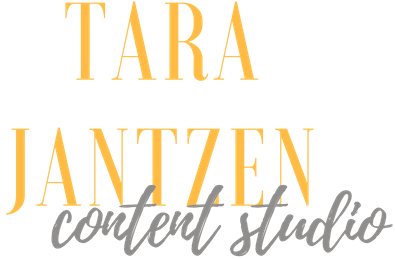Next to having a smart content strategy in place, leveraging a robust editorial calendar is the most important thing you can do to ensure successful content execution.
Most organizations now publish a higher volume of content assets, have more individuals authoring content, and often these content developers are dispersed throughout a region or across the globe. Factor in complex business priorities, a wide array of industry trends and topics, enormous technological advances, and a rapidly evolving marketplace, and you have a massive web of variables of which to stay ahead.
Even if you’re managing the content strategy of a smaller organization, or as a one-woman show, leveraging an editorial calendar can support long-term scalability and minimize writer’s block.
But the real benefit is you have a holistic view into the events and activities of your organization for the entire year, providing a starting point in many cases, to the actions you need to take to support business priorities. You can share this with leadership to gain buy-in for where you will focus editorial time, and you can provide meaningful metrics showing how you’re impacting their priorities each quarter and by year’s end.
Tools. There are loads of tools and templates out there to support a comprehensive editorial program or you can build your own. The Content Marketing Institute provides a great editorial calendar template in Excel to leverage. It supports multiple content types but is mostly set for a blog platform. WordPress also has numerous plug-ins that support blog calendaring – try this one. And HubSpot shows how to create an editorial calendar for free using Google Calendar. If these don’t work, pull what features you like best and build your own. I personally use a simple Excel spreadsheet to manage my own editorial calendar.
Key Tracking Elements. The more authors you are working with, the more robust your calendar will need to be. If you’re building your own or enhancing an existing calendar template, there are a few key elements to consider.
- Build Calendar Baseline – What I mean by this is first gather all activities that will impact your content development for the year. This includes key external, industry, and even internal events your company plans to attend, specific campaigns the marketing and sales teams may be planning, solution or product launches planned, external industry award timelines, major trade and tier-one publications’ editorial calendars and key topics you have a primary interest, and don’t forget global holidays which may impact publication and availability dates. Use all of this as a starting point to build out your yearly activities.
- Content Type – Not all content is going to be a blog post. If you work in an organization with a larger range of assets, there may be multiple pieces developed for one initiative. For example, you may have a blog post to write, but another team may be working on a supporting infographic. Or as part of a solution launch, there may be a services overview sheet along with a supporting video interview with the leading subject matter expert. Track each content type together and ensure the dates make sense in the evolution and publishing of each piece.
- Author – If the author is someone in your smaller group of oversight, this is simple to show who has ownership. If an author is someone outside your circle, you may also want to consider adding a field for “owner” so the team knows who is responsible for working with the author to get this complete.
- Publication Location – You may be creating content for multiple locations. The content type may not make it clear, so add in the location where this content will publish. Website (be specific where), blog, social media, intranet, email campaign, newsletter, etc.
- Title Ideas – As you identify content assets to develop, start thinking about titles. You want to attract the right attention to your content; so thinking early on about titles can get ideas flowing and may impact what you write about.
- Key Inputs – In the spirit of content repurposing, there may be existing assets that can or should be leveraged to drive new content. Hopefully, you have a content asset inventory to help you easily identify what can support a new piece. If not, work with your team and the business to see if something that currently exists can impact a new piece.
- Publish Date – When should the content go live? Does it need to align to a campaign? Is there a press release coming where this may need to hit in advance or shortly thereafter? Think about the entire set of needs and how this particular piece of content impacts the stream.
- First Draft Due Date – To manage your authors’ work, give them a deadline for first drafts. Work backward from the publish date so you can factor in necessary reviews.
- Final Review Approval – If an author reports to someone who wants to see all content before publishing, note this so it’s not forgotten and document when it was completed. Some content may require a legal review as well, so be sure to scope that out in advance.
- SEO Keywords – What’s the use of developing all this great content if users can’t find it? Be sure you are up to date on the company’s SEO strategy so you are smart about when and how to use primary keywords. Also, test it out to ensure what you are doing is actually working. Tweaks may need to be made along the way to get the search results you desire.
- Categories and Tags – Whether you’re posting to a blog, website, or just in your content management system, most systems leverage some form of meta tagging. Be consistent for optimal content categorization. There may already be a set of tags which you need to work with, or the spelling of something may be set one way for consistency. For example, content managers may be using “Cloud” as a keyword versus what you may have used, “Cloud Services”. Establish agreement in advance so there aren’t multiple categories appearing that ideally should all be under one–make it easier on your audience to find content quickly and logically.
- Call-to-Action – Always include a call-to-action in your content. It doesn’t have to be complicated. It might be as simple as driving them to a contact on your website for more information. Maybe you have a downloadable whitepaper to direct them to, or you want them to sign up for an upcoming event. Work with the business to figure out where you can provide the most value to your target audience and the optimal visibility for the business team based on their goals.
- Key Metrics – I cannot stress enough the importance of metrics. Even if leadership isn’t asking for them today, they will eventually request them. Always be prepared to show the value of the content you are publishing in the context of the larger organizational goals. Work with your teams to consider what you can track and how that aligns to a business priority. Ask business leaders what matters most to them. Some metrics may come from them as they track sales leads. Identify what, how, and when you will track in advance—assign ownership.
Calendar Oversight. Having a wonderful calendaring tool is great, but if it’s not managed well, it’s useless. If you use something like Excel or another document-based tool, there should be one person who manages the master calendar. Online tools are great for getting status updates from a dispersed or virtual team, but try to control who can make changes to the original content plan. If you work with a team regularly reviewing the calendar together, or you leverage an editorial board, share the calendar to ensure everyone is still on the same page, and be certain additions and changes get consensus and are centrally managed.
Be Agile. Life can change quickly, especially in larger organizations. Having a calendaring tool and plan that can adjust to those changes is important. Don’t get flustered when this happens, as it’s usually pretty common. Just make adjustments and ensure the team knows about the changes, then move forward. Being able to adapt to constant change or even working in a state of ambiguity at times is par for the course. You may want to consider having a stash of content ideas to fill gaps that may occur as part of this influx. This allows you and your team to bounce back more quickly and stay productive.
How about you—do you have a great editorial calendar tool you use? What are some other success secrets you have for managing and developing content? Any lessons learned that you could share to help someone else avoid similar mistakes? I’d like to hear from you.
Image: ©iStock.com/Violka08


Pingback: Crazy Content Ecosystem | What’s It All Mean? | Blog | TARA JANTZEN